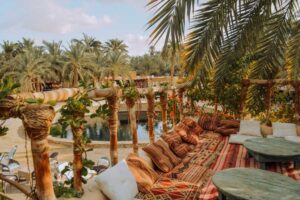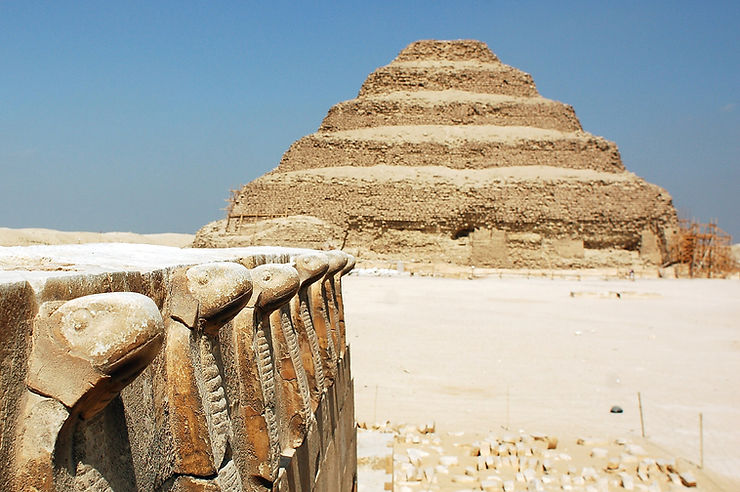
When thinking of Egypt and pyramids, most people automatically think of the Giza Pyramids. But what most people fail to realize is that they’re not the sole pyramids in Egypt, and not even the oldest!
Read more: 9 Different Egyptian Pyramids (That AREN’T The Giza Pyramids!) That You Need To See
One of the things that makes the Pyramids of Giza so fascinating is their sheer size, plus the neighboring Great Sphinx. But not too far from the Giza Plateau is the necropolis of Saqqara, which is home to the Step Pyramid of Djoser, the oldest pyramid in the world (and also the oldest complete stone building in the world, by the way), as well as a fascinating array of smaller pyramids and Old Kingdom and New Kingdom tombs.
Wait, what exactly is Saqqara?
Saqqara (also spelled Sakkara) was the royal necropolis of Ancient Egypt’s Old Kingdom capital, Memphis. The remains of the necropolis today include the Step Pyramid of Djoser (aka Zoser), smaller pyramids, tombs and other Ancient Egyptian monuments. Outside of the necropolis that’s sectioned off for sightseeing, Saqqara is still an active archaeological dig site, with almost yearly discoveries.
Is Saqqara worth visiting while in Cairo?
If you have the time, then definitely. For several reasons:
- The Step Pyramid of Djoser is the oldest pyramid in Egypt, and is considered the initial prototype for the smooth-sided pyramids of Giza (you can see more of that evolution with the Bent Pyramid of Dahshur)
- Saqqara actually has more to see than the Giza Plateau, between the different pyramids, mastaba tombs, Serapeum, etc. Continue reading down below for a more detailed guide to what you can see in Saqqara
- Saqqara isn’t far at all from Downtown Cairo, around an hour maybe. Paired with the Dahshur Pyramids and maybe the remnants of Memphis, it’s a really nice half-day trip that’s easily put together by any tour agency if you don’t want to do it solo
- Saqqara is much emptier and quieter than the Giza Pyramids. You can wander around the site without any annoying touts and vendors, and there are actually plaques to describe what you’re looking at it, which is a rarity in Egypt
What to See in Saqqara
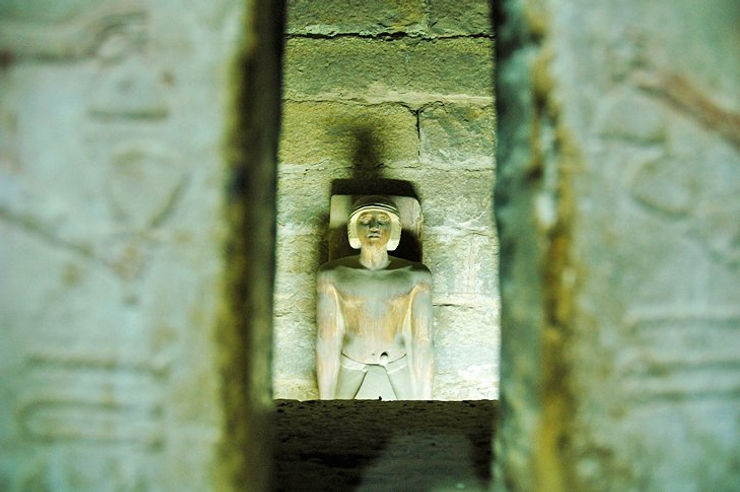
Mastaba Tomb of Ti
Like we said above, Saqqara is divided into both a tourist site open to visitors and an active dig site. You won’t be able to explore the dig site for obvious reasons, but there’s still TONS to see.
Local tip: not all of the following are always open to the public, sometimes they’re closed for restoration or are on rotation. Unfortunately the only way to find out what’s open and what’s not is to actually go, lol.
So here are the main spots in the necropolis, and they’re all a very quick drive away from each other by car, or you can hoof it but beware all the sand and sun:
Main Saqqara Site #1: Step Pyramid of Djoser Complex
Ok so first off, you’ll hit the Step Pyramid of Djoser Complex. There’s lots to see and explain, but we’ll only get briefly into the main points or else we’ll be here all day.
The main things to see there once you walk in are:
i) Colonnaded Entrance of the Djoser Step Pyramid Complex
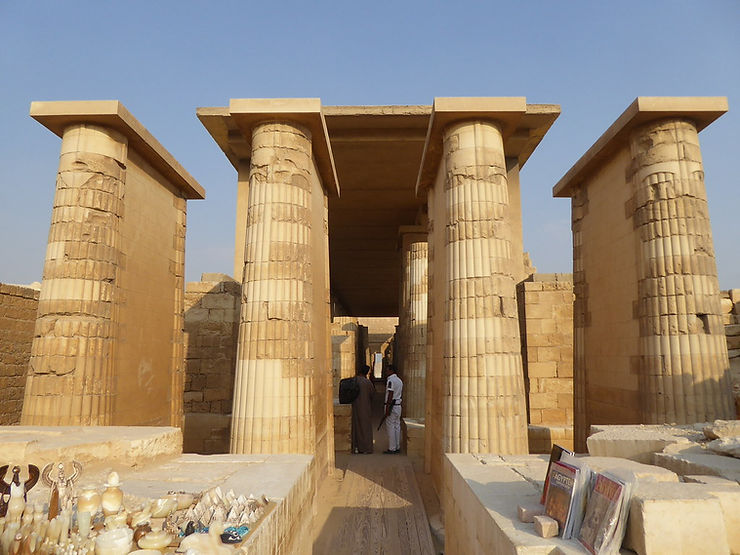
You’ll enter the complex through here (same as ancient days, by the way). The colonnade is 20 pairs of columns with 24 small chambers between each, which are thought to maybe represent the nomes of Upper and Lower Egypt, and may have once held statues of the pharaoh or the gods.
ii) The Step Pyramid of Djoser
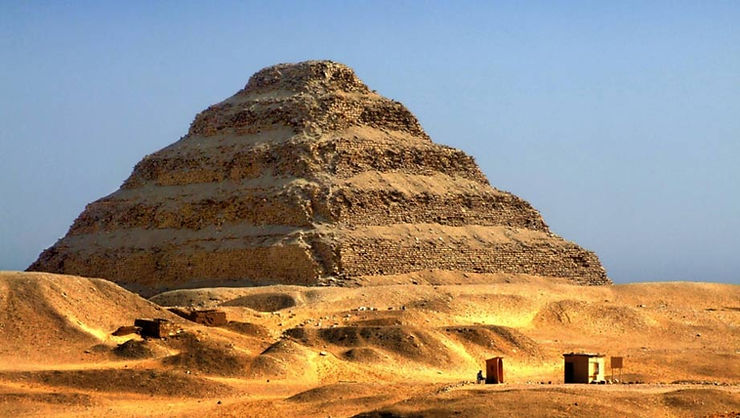
This beauty is the oldest Egyptian pyramid to date – it was built c. 2670–2650 BC, so it’s about 4,700 years old, if you can believe that. The architect was Djoser’s vizier Imhotep, thought of now as the founding father of Egyptian pyramids, and the design is six mastabas of decreasing size atop one another. Mastabas were how pharaohs and other Egyptian royalty and VIPs were buried before the invention of the pyramids — mastabas were rectangular, flat-roofed tombs.
You can enter the Step Pyramid with an extra ticket. You’ll enter through the Southern Passage, where you’ll walk down a stone corridor (local tip: it’s nowhere near as narrow or steep as the Giza & Dahshur Pyramids, so if you want to go inside a pyramid with the least amount of claustrophobia/physical exertion, this is the one to enter). At the end of the corridor you’ll reach a railing where you can look down and see the burial chamber where Djoser was laid to rest, deep in the belly of the pyramid.
Note: the Northern Passage into the Step Pyramid is not currently open to the public, which is a bummer because it leads to tunnels with some fascinating tiling, engraving and wall imagery.
iii) South Tomb
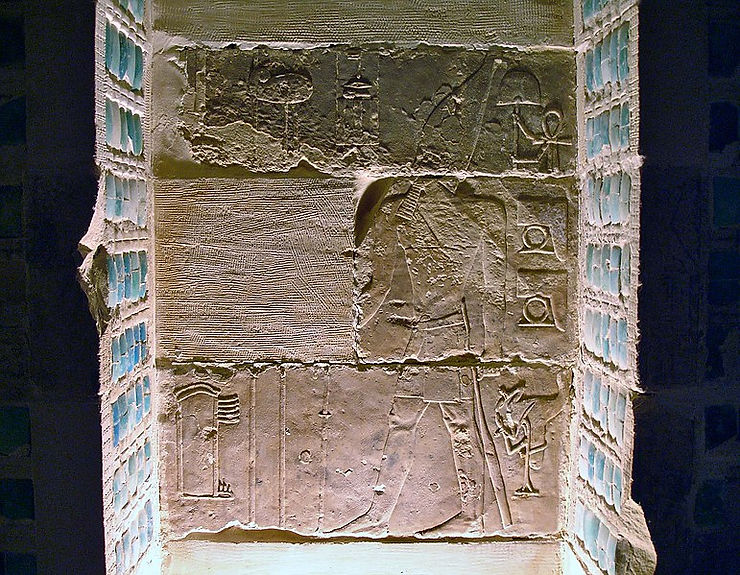
The South Tomb is a good place to see what you’re missing within the Northern Passage of the Step Pyramid. Because this tomb is too small to actually hold Djoser’s body, Egyptologists have several theories about the function of the tomb: one is to house the pharaoh’s ka in the afterlife, and a second theory is that this is where the pharaoh’s organs were kept in canopic jars (although future pharaohs were always buried with their canopic jars in the same burial chamber, so it’s a mystery).
In either case, the South Tomb has a 30m tunnel that descends into a pink granite burial chamber. It then leads into further chambers that have blue tiling (like the non-accessible Northern passage of the Step Pyramid) as well as wall decoration.
Note: you need to buy an extra ticket to enter the South Tomb.
iv) Serdab
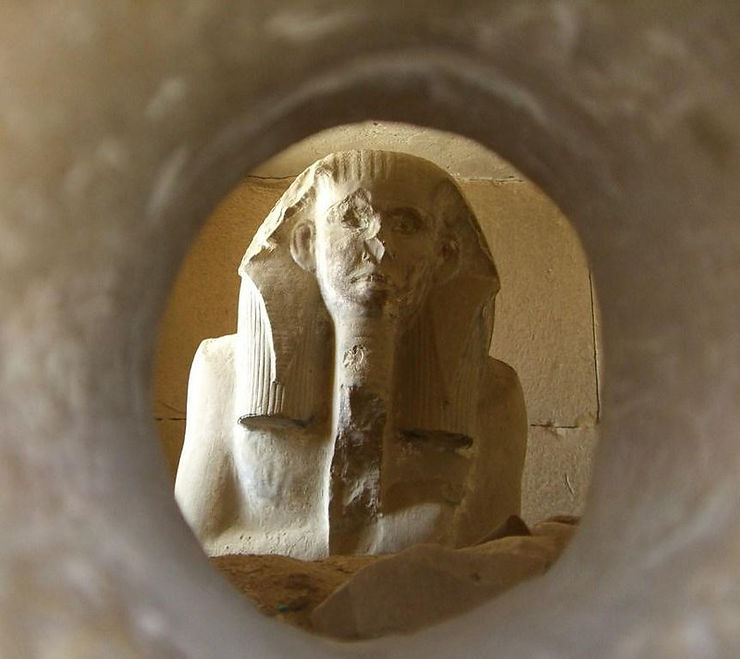
The serdab is a small, enclosed chamber from the Old Kingdom that houses a statue of the deceased (in this case, Djoser) with just a small hole in the wall. It’s believed this statue was for the Pharaoh’s ka, and the sealed off space allowed the soul protection within its walls. You can peek into the hole and see what’s left of Djoser’s statue.
Like we said above, there’s loads more to see at the Step Pyramid Complex so make sure to read up on the nitty-gritty before you go. There’s also signage there if you’re not going with a guide.
Saqqara Main Site #2: Pyramid of Unas & Old Kingdom Mastaba Tombs
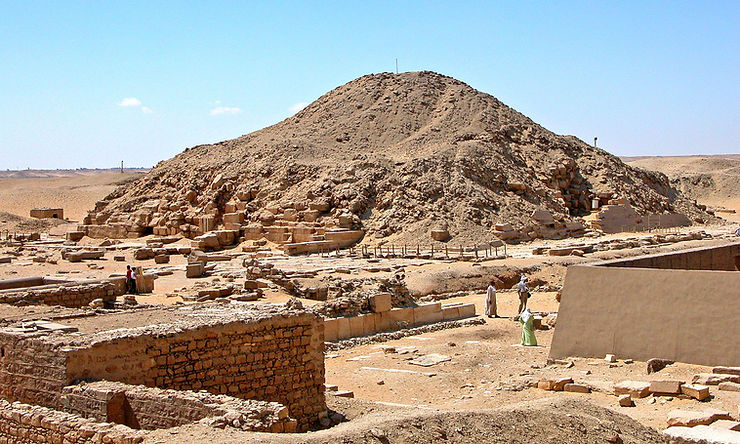
While the Pyramid of Unas is not much to look at externally anymore, it’s what’s inside the collapsed pyramid that makes it so interesting. It’s the smallest remaining pyramid of the Old Kingdom, but notable due to the discovery of the ‘Pyramids Texts’ inscribed inside on its walls. The Pyramids Texts were funerary texts and spells for the pharaoh’s afterlife, which would later become the basis of the Book of the Dead.
Nearby the Pyramid of Unas are other Old Kingdom mastaba tombs such as:
- Tomb of Mehu, a royal vizier
- Tomb of Ti, known for its wall depictions of daily life in the Old Kingdom, including scenes of farming, boat-building and poultry-fattening
- Tomb of Niankh-Khnum and Khnumhotelp, an unusual ‘double tomb’ mastaba. It’s not common to find a tomb for two people, so it’s theorized that these two men were brothers, and perhaps twins (one theory is that they were actually conjoined twins)
- Tomb of Irukaptah, also known as Tomb of the Butchers
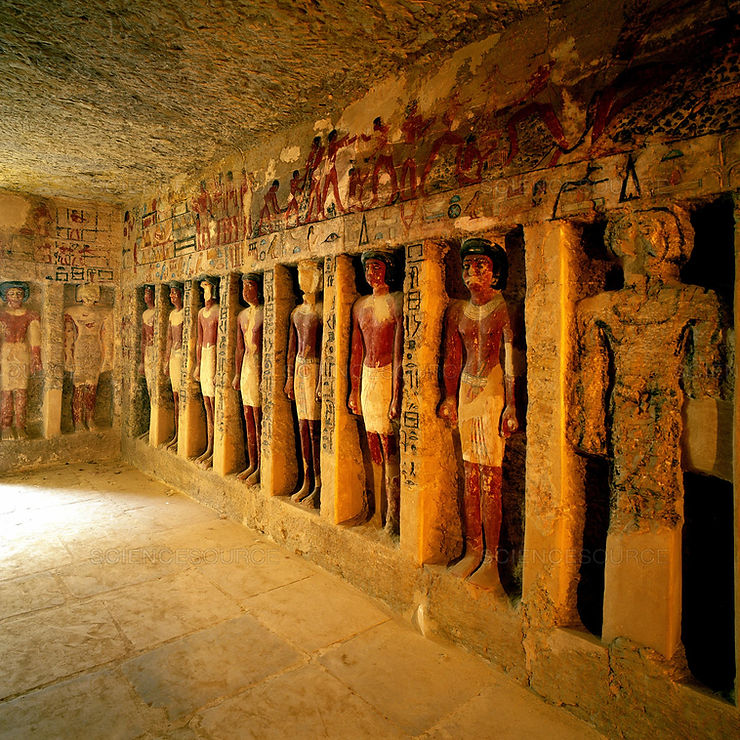
Tomb of Irukaptah (Tomb of the Butchers)
Saqqara Main Site #3: Pyramid of Teti & Tomb of Mereruka
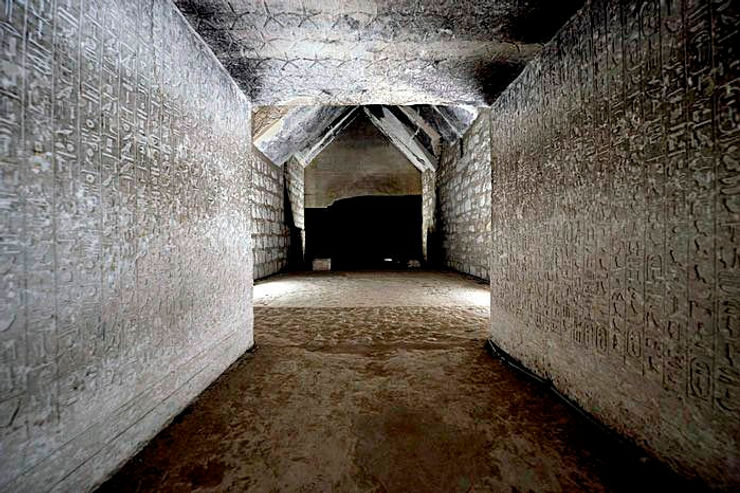
Inside the Pyramid of Teti
This pyramid doesn’t even really resemble a pyramid anymore – you’d be forgiven for thinking it’s a sandy hill. But it is in fact the remains of the Pyramid of Teti, and underneath the rubble is worth seeing too – it’s the second known pyramid to have Pyramid Texts on its walls.
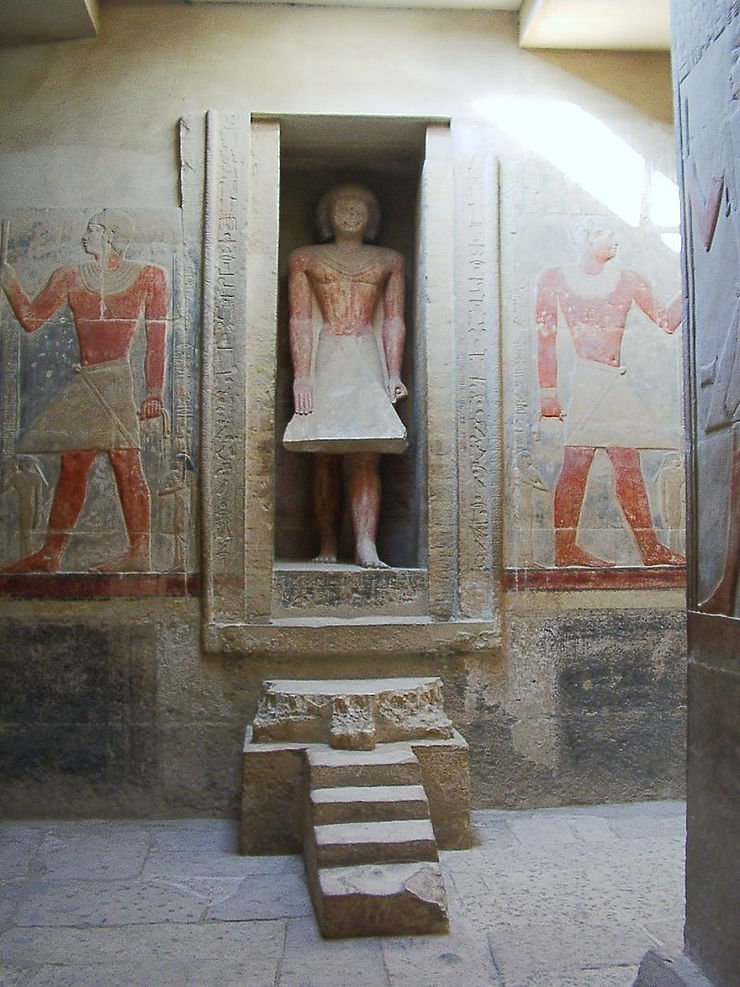
Tomb of Mereruka
Nearby the Pyramid of Teti is the Tomb of Mereruka, the biggest and most elaborate tomb of all the non-royals buried in Saqqara. It has 33 chambers in total, with wall paintings and a life-like statue of the vizier Mereruka himself. (Note: going inside the Tomb of Mereruka needs an extra ticket).
There are also other Old Kingdoms tombs near the Pyramid of Teti worth visiting, like the Tomb of Kagemni.
Saqqara Main Site #4: Horemheb Necropolis (Tombs of the Nobles & New Kingdom Tombs) and the Bubastieion
This site is for the “newer” tombs of the New Kingdom (and by newer, we’re talking 3,000+ years old lol). Although during the New Kingdom the Ancient Egyptian capital was at Thebes (now modern-day Luxor) and the pharaohs were buried in the Valley of the Kings there, the generals were still buried in Saqqara. Horemheb was a general during the time of Tutankhamun and built his tomb in Saqqara, but then became pharaoh after King Tut died childless.
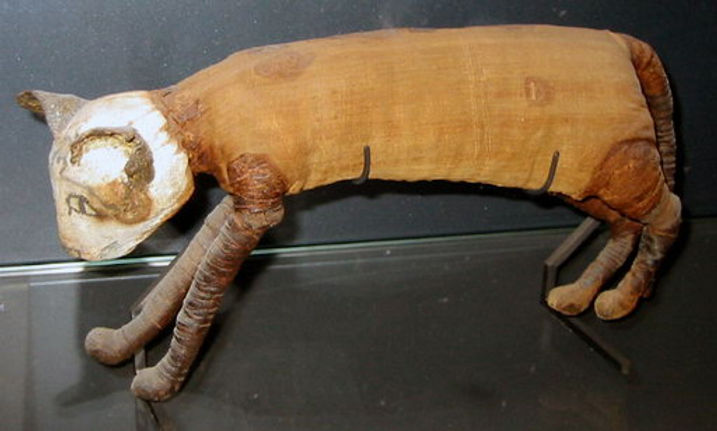
Mummified cat found in the Bubastieion, now in the Louvre
The Bubastieion (or Bubasteum) was a temple dedicated to Bastet, the cat goddess. It’s a cat necropolis where over 100 cat mummies were discovered and thousands of cat bones found. 5 lion mummies were also found there.
Saqqara Main Site #5: Serapeum
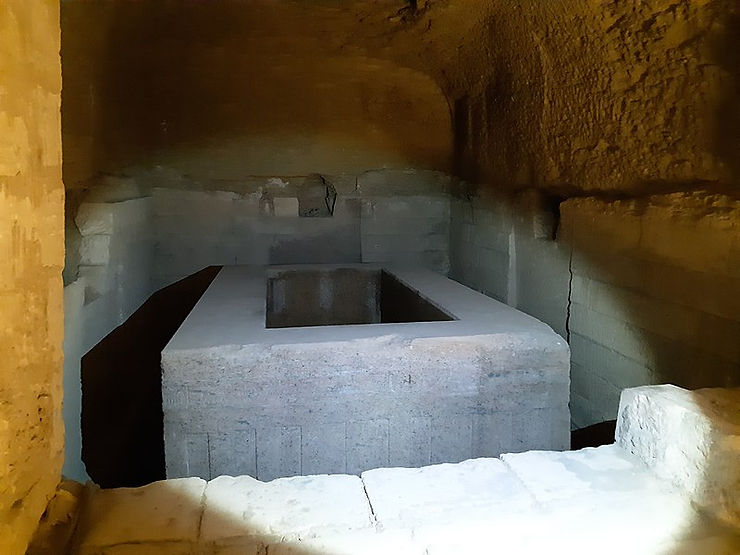
Apis bull sarcophagus
So we covered the feline necropolis, but did you know there’s also a burial ground for bulls in Saqqara? It’s true, the Serapeum was for a sacred Ancient Egyptian bull called the Apis, and more than 60 bulls were found to be buried there, with 24 sarcophagi still remaining at the site.
How to Get to Saqqara
The most direct and hassle-free way of getting to Saqqara is arranging with a local tour company for them to pick you up and take you there (you can also add on whatever sights you’d like, for example the Dahshur Pyramids or Memphis. You can also include the Pyramids of Giza and have one big Pyramids day).
You can also go solo, via Uber or taxi, but these are our local tips:
- The Saqqara necropolis is off the beaten track a bit and in agricultural land, so it’s not always straightforward to get to and sometimes the GPS will lead you astray. It’s better to make sure your driver knows how to get there without relying on GPS
- The Saqqara necropolis is pretty big and ideally would need a car to drive you from one main site to the other; it’s doable on foot but ultimately a big hassle
- It’s almost impossible to get an Uber back from Saqqara, so if you go with an Uber or taxi, make sure that they wait for you to finish and you can leave with them
Saqqara Opening Hours
8 am – 5 pm (closes earlier during the month of Ramadan)
Saqqara Ticket Prices
Standard Entrance to Saqqara Necropolis Ticket:
Non-Egyptian ticket: 200 EGP
Non-Egyptian student ticket: 100 EGP
Egyptian ticket: 30 EGP
Egyptian student ticket: 10 EGP
Local tip: this ticket includes the Step Pyramid of Djoser complex, Unas and Teti Pyramids and the tombs of Kagemni, Nikauisesi, Ankhmahor, Nefereshemptah, Ptahhotep, Ti, Idut, Unasankh and Iynefert – but keep in mind the tombs are sometimes on rotation so you’re not guaranteed these will be the same tombs open on the day you go.
Entry into the Step Pyramid via the Southern Passage Ticket:
Non-Egyptian ticket: 100 EGP
Non-Egyptian student ticket: 150 EGP
Egyptian ticket: 40 EGP
Egyptian student ticket: 20 EGP
South Tomb in Step Pyramid Complex Ticket:
Non-Egyptian ticket: 100 EGP
Non-Egyptian student ticket: 50 EGP
Egyptian ticket: 30 EGP
Egyptian student ticket: 20 EGP
Nobles Tombs & New Kingdom Tombs in Horemheb necropolis and the Bubastieion Ticket:
Non-Egyptian ticket: 160 EGP
Non-Egyptian student ticket: 80 EGP
Egyptian ticket: 20 EGP
Egyptian student ticket: 10 EGP
General Local Tips About Visiting Saqqara:
- As you can probably tell by now there’s a ton to see, so if you’re interested in visiting all the sites and entering all the tombs, this will take the better part of half a day. If you want to visit as part of a larger Giza Pyramids + Saqqara + Dahshur tour, you’ll have to streamline your Saqqara visit
- There aren’t any restaurants or cafes there, so make sure to bring your own snacks/water (there are a few touts selling water & sodas, but for exorbitant touristic prices)
- The sun is strong, so make sure to bring sunscreen and a hat if you’re sensitive to the sun
- Saqqara is a great spot to be able to see in the distance the rest of the pyramid fields: Giza, Dahsur & Abu Sir Pyramids
Happy exploring and enjoy!




